10 sci-fi and fantasy art painting tips
How to create great sci-fi and fantasy art in Photoshop.
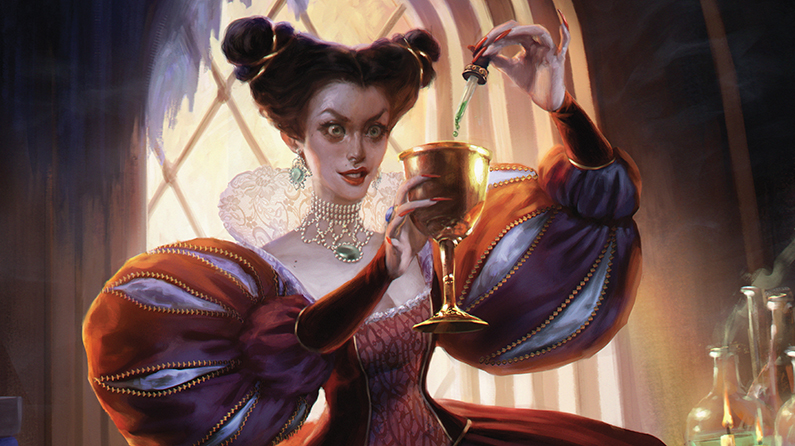
If you're learning how to paint, and you're a fan of science fiction and fantasy art, these pro tips will help you to hone your painting techniques.
To help beginners learn how to draw sci-fi and fantasy scenes, artists who contributed to 3dtotal Publishing's book Beginner’s Guide to Digital Painting in Photoshop: Sci-Fi and Fantasy have shared 10 great pieces of advice. Read on to learn more…
01. Create a dynamic composition

"Ever since the Baroque period, artists have noticed that if you want an artwork to feel dynamic, a great way to achieve this is to pose the scene diagonally," says Bram Sels.
"The rider I am creating in this case could have been running straight towards the camera, with legs almost in vertical lines. By tilting the stag and the rider, the figures become unbalanced, adding a lot more movement and action to what they’re doing. Note that there is clear space outside the figures which is irregular to make the composition even more dynamic."
02. Create a story

"One of the biggest gifts of being an artist is the ability to tell stories without using words. Every line of your pencil and every stroke of your brush carries an intention; they mean to say something," explains Caroline Gariba.
"The more you create a background story for your character or scene, the more easily and quickly you will be able to produce a new piece of art. Being able to fully understand the storytelling in a scene is key to achieving the best results in these sorts of illustrative pieces."
03. Consider the mood of the image
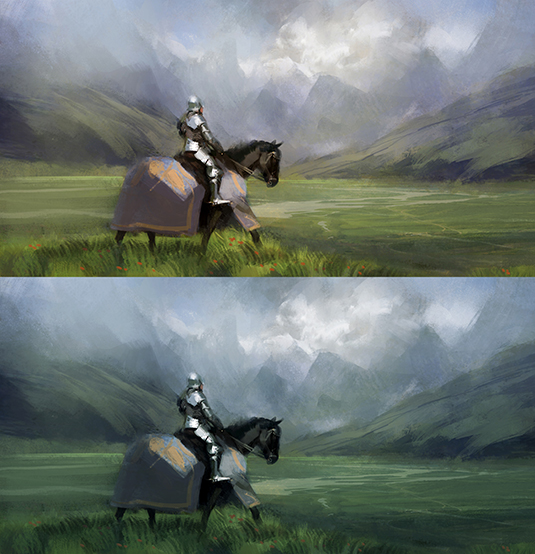
"Mood is just as important as composition when it comes to telling a story. The colour palettes that you choose play an important role in defining the mood," says Wendy Yoon.
"Although our interpretation of colour is subjective, there are certain colours with common associations originating from nature, personal experiences, and tradition that are perceived universally. As an artist, you can manipulate the colours in your painting to convey a particular mood to the viewer. Fortunately for us, Photoshop makes it incredibly easy to change things so you can play around with a wide array of possible palettes."
04. Ground your ideas with logic
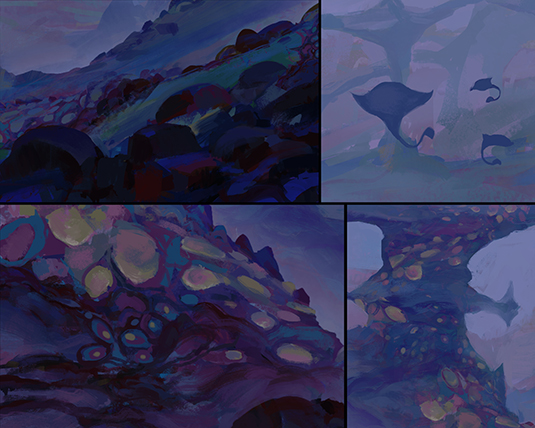
"If you wish to paint a believable sci-fi landscape, it is incredibly important that you have a good idea of the world you are creating," recommends Oscar Gregeborn.
"Here we are dealing with an underwater alien world, so this tells us a number of things: the lighting should be soft and scattered; water scatters light much more effectively than air, so the atmospheric perspective should be pushed; the rock formations should be smooth, as the water grinds away at them over millions of years. The intention of a list like this is to make the world you paint more cohesive. Physics and logic still apply to this image, even though you are painting an alien landscape."
05. Practise perspective
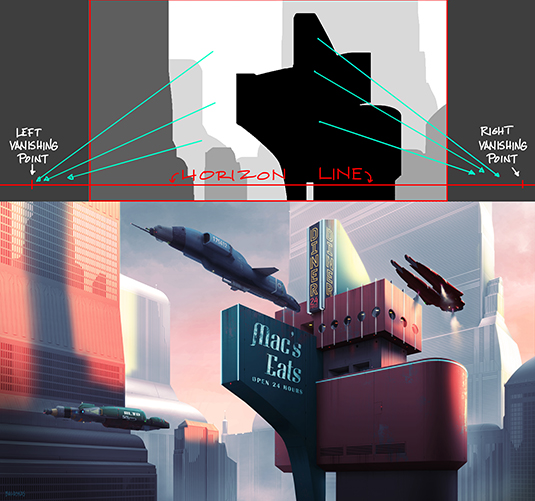
"A futuristic sci-fi city demands an accurate use of perspective in order to convince the viewer to suspend their disbelief, engage with the subject matter, and let their imagination run free," says Christopher Balaskas.
"A good knowledge of perspective, and its rules, is a critical foundation skill for an artist, so I encourage you to explore and study the great wealth of information and tutorials available either for free or low-cost on the internet or in books dedicated to the subject. If perspective is implemented incorrectly, it’s often the first thing that a viewer will notice, and the rest of the image will suffer."
06. Create more contrast
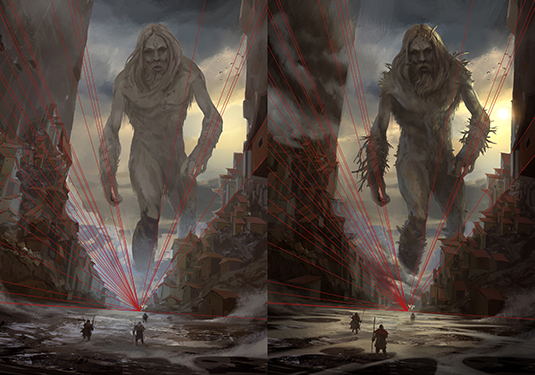
"Remember that dark objects can be viewed more clearly if they are placed on bright backgrounds; similarly brighter elements become more visible on darker surfaces. If you don’t consider this, you will probably end up with a flat, dull, or even boring image," explains Sina Pakzad Kasra.
"In this image I paint a cloudy sky in the creature’s background and position the brighter parts of the sky where it can help make the shape of the creature more distinct. This will mean that the creature will have higher contrast and as a result gain more prominence in the scene."
07. Use gradients for atmospheric effects
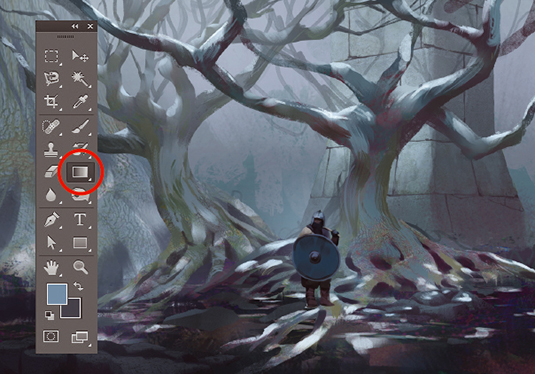
"Atmosphere is a significant element in conveying a particular mood in a painting," says Yoon. "Use the Gradient tool on a new layer with Opacity set to 14–20% in order to further separate the background from the mid-ground. Simply select the tool and click and drag across the canvas. When you open up the Gradient tool you can choose from a number of gradient types, such as Linear Gradient, Radial Gradient, and Diamond Gradient. I tend to use the Linear Gradient for environment effects (fog, haze, dust) and Radial Gradient for special effects (light blooms). This will help to create atmospheric perspective, which is when objects far away take on some of the atmosphere’s colours and become hazy."
08. Create magical props
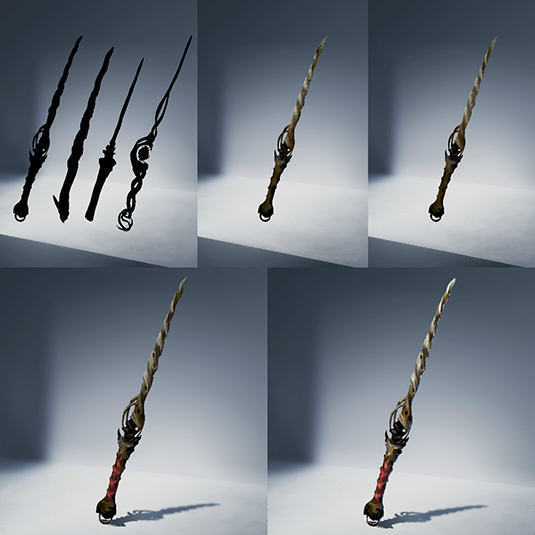
"It is important to give a wand character to distinguish it from an ordinary stick. Play around with simple silhouettes using the Lasso tool to find a wand that speaks to you," advises James Wolf Strehle.
"After choosing your design, select the shape by Ctrl+clicking on the layer thumbnail, then use the Brush tool to rough in the colours. Use a colour palette that helps to describe the wand and its user. Use the Smudge tool to shape the wood, twisting it and bringing out the natural look of the material. Follow the strokes and add details to define the wood. Blue rim lighting rounds out the form and helps define the shape."
09. Loosen up with traditional materials
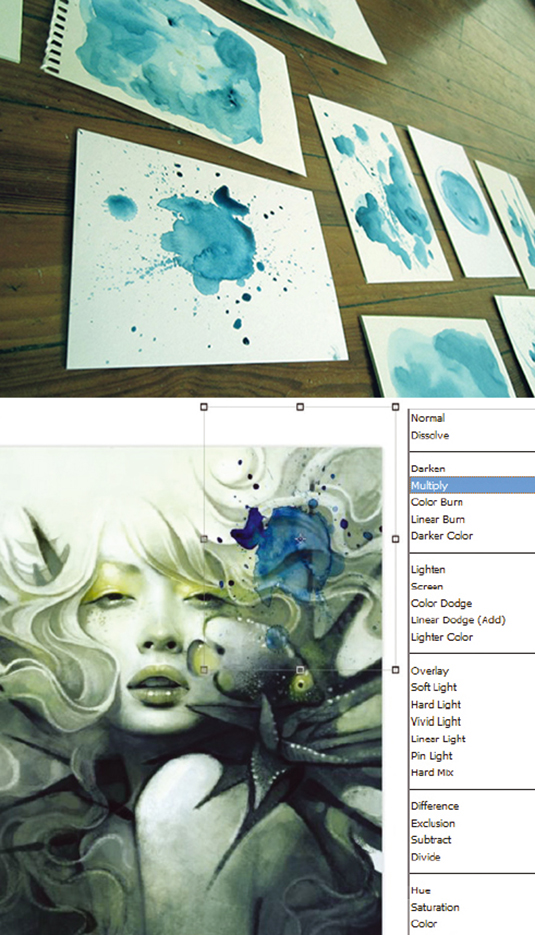
"After countless hours of screen-time working hard on your digital painting, it can be refreshing to throw some real paint around and make a mess in your living room," says Anna Dittmann. "While your housemates may not agree, the resulting textures can be both fun to create and worthwhile for your digital work.
"Occasionally I like to refresh my texture library with new material by testing out assorted stains and drips. I scan these marks I have made with traditional materials into my computer in a high resolution for the best quality."
10. Make sure your animal anatomy is accurate

"Animals and their anatomy are a really complex thing to recreate, so you should never try to do it without looking at a selection of references," recommends Sels. "Before I begin to work on this animal, I look at how the muscles in deer and horses work and try to understand and then translate the shape, positioning, and movement into the illustration. The anatomy of the head is really important as well, so look closely at how the bone structure of the skull gives shape to the fur on top.
These tips come from Beginner’s Guide to Digital Painting in Photoshop: Sci-Fi and Fantasy from 3dtotal Publishing, which is aimed at aspiring digital painters and concept artists.
Related articles:

Thank you for reading 5 articles this month* Join now for unlimited access
Enjoy your first month for just £1 / $1 / €1
*Read 5 free articles per month without a subscription

Join now for unlimited access
Try first month for just £1 / $1 / €1
Get the Creative Bloq Newsletter
Daily design news, reviews, how-tos and more, as picked by the editors.

Dom Carter is a freelance writer who specialises in art and design. Formerly a staff writer for Creative Bloq, his work has also appeared on Creative Boom and in the pages of ImagineFX, Computer Arts, 3D World, and .net. He has been a D&AD New Blood judge, and has a particular interest in picture books.
